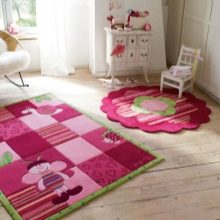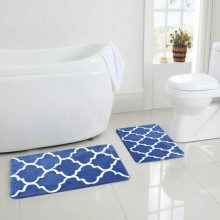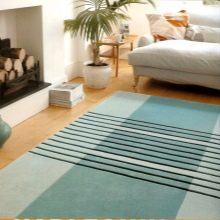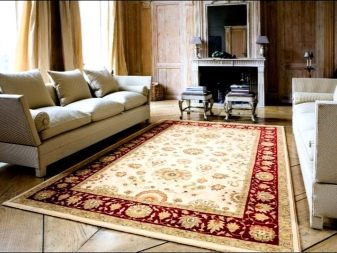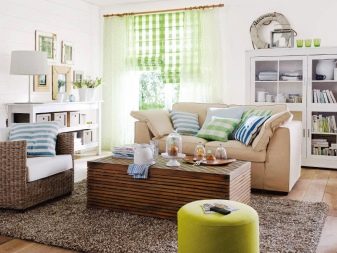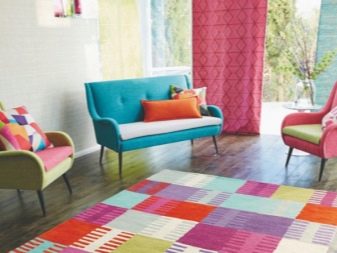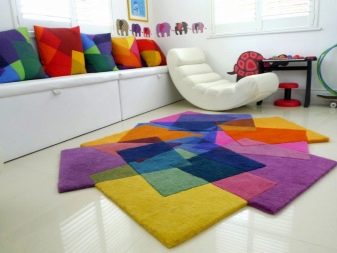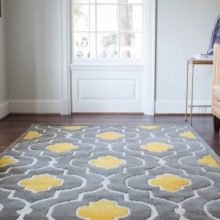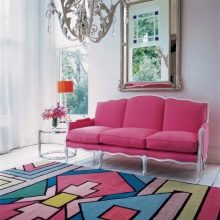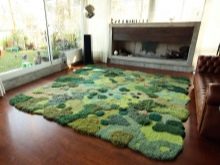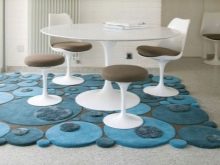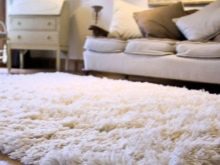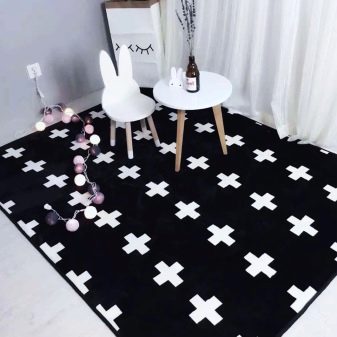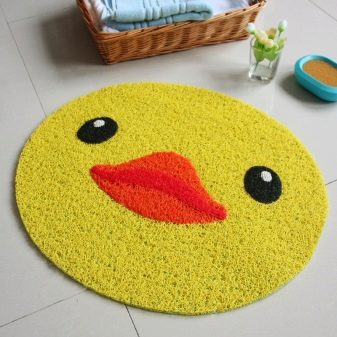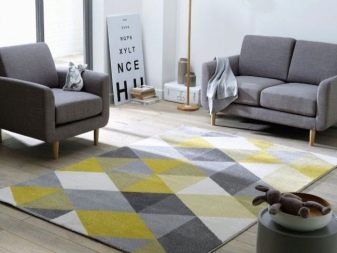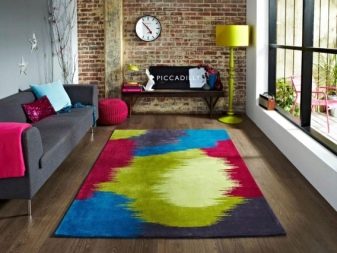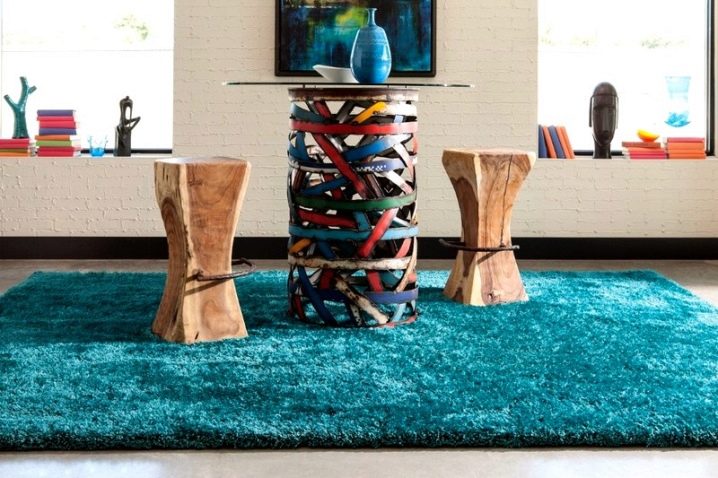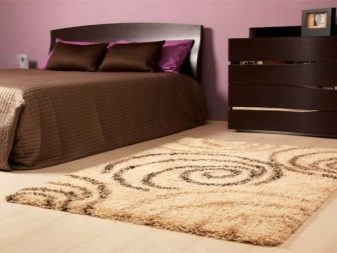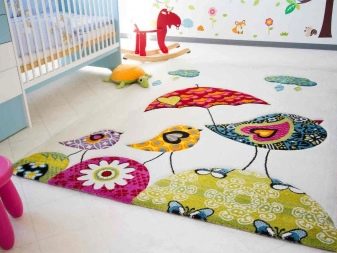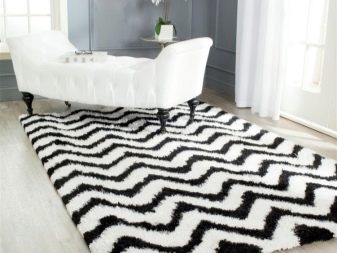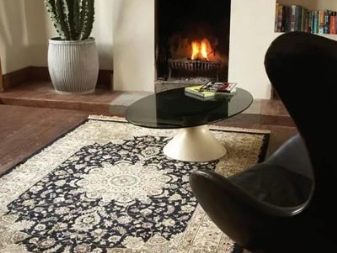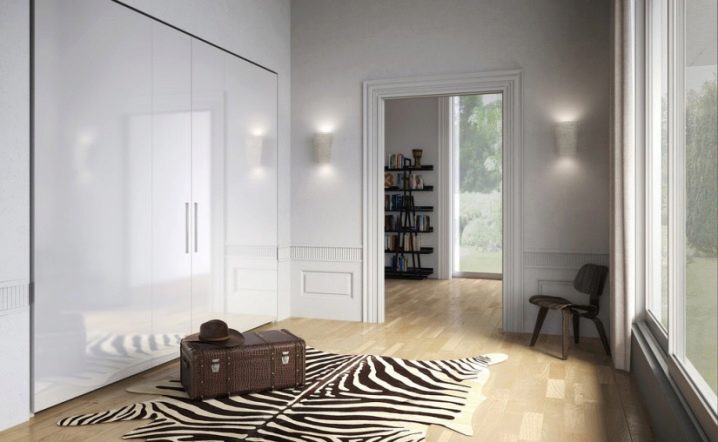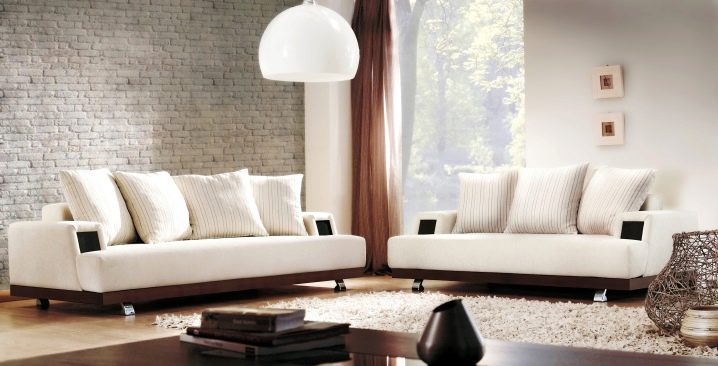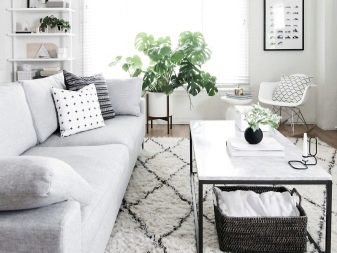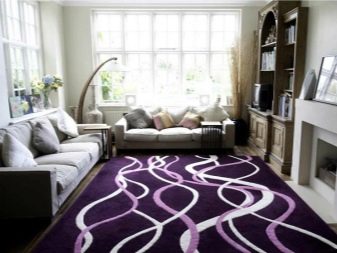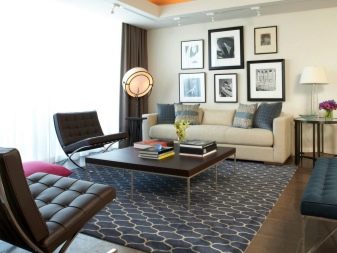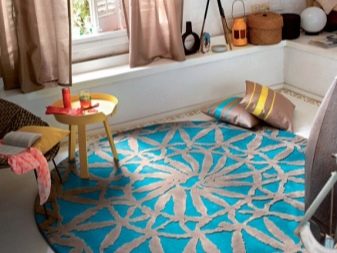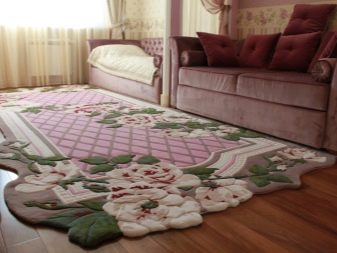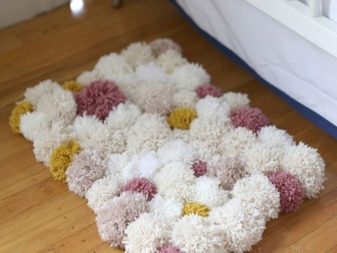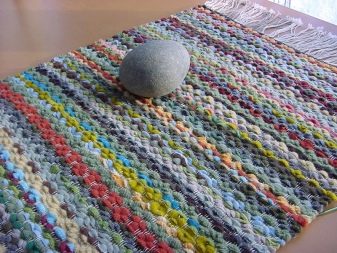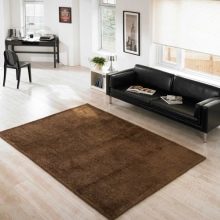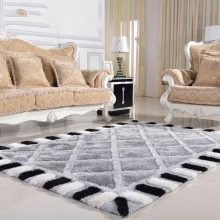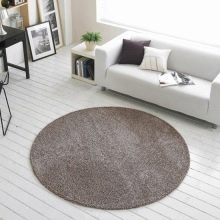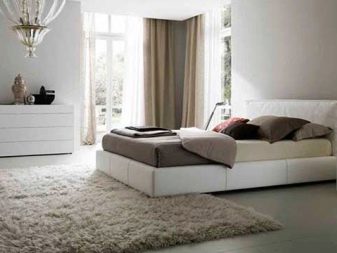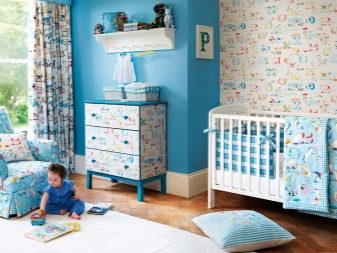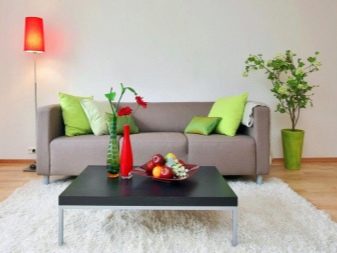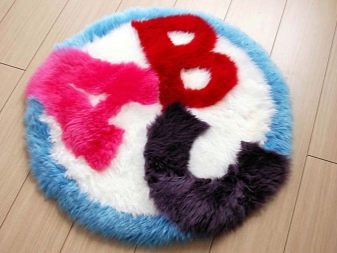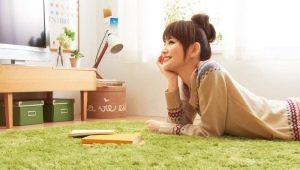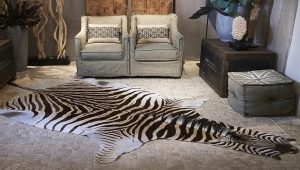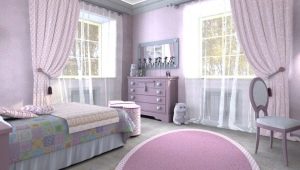Pile carpets
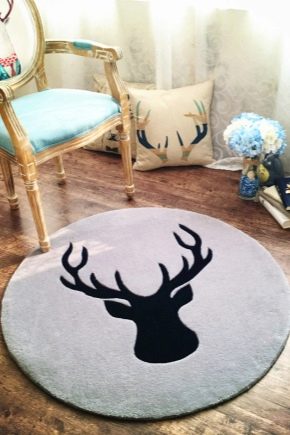
If it comes to a soft and comfortable carpet, a fluffy covering immediately appears, with a drowning softness, walking on which is a pleasure. However, few people know that nap carpets are capricious, require special attention in the selection and can decorate the floor surface in not every room of the house.
Special features
Pile carpets are a unique solution to the design of the room. Made from different materials, they successfully fit into the chosen style, they can be a bright accent, emphasizing the idea of style or a link, smoothing the bright spots of the design and bringing the right temperature into the room.
The presence of the pile is a feature of such coatings. Unlike lint-free counterparts, the production principle of which is based on two threads, carpets with nap are somewhat more complicated: three threads take part in their creation:
- the main - thread inside-out, to which the pile is attached;
- workingforming a knot or loop;
- fixingfixing the knot.
Fleecy carpets are canvases made up of many villi fastened at the base. They can be of different density, have monophonic color or colorful pattern of different subjects. According to the method of production they are:
- wicker - created by rounding the warp threads;
- typing - performed by needle-punching method;
- fragmentary - made from separate blanks attached to the base with the help of threads or glue.
Varieties of pile
Pile carpets are notable for their structure. They are not just different lengths, which, depending on the model, can vary from very small up to 10 cm. Villi can be combined into continuous loops that differ in structure and appearance. They can be soft, dense, elastic, coarse, thick, thin, straight or spiral-shaped.
Conditionally tufted carpets can be divided into several varieties:
- Cut-loop - Carpet filling in the form of a mix of long split villi and continuous low loops, ranging in length from 4 to 8 cm;
- Saxony - twisted "curly" lint of the same size and shape no longer than 5 cm (identical fibers);
- Shaggy - “shaggy” Saxon-type villi with the only difference: the pile is different in thickness, therefore it looks fluffy and densely filled;
- Frieze - the magnificent curled fibers from 3 to 5 cm long.
Each species has its own characteristics, life. It is believed that a large pile is able to create better conditions for a comfortable and relaxing atmosphere, but it is more difficult to maintain, such carpets are less durable.
Tips on how to properly care for your carpet are given in the video below.
Benefits
Pile carpets are unique.
Having an attractive appearance, they are distinguished by a mass of advantages:
- performed on production equipment or at home manually;
- may consist of raw materials of natural, synthetic origin or their combination, differing in the structure of fibers (they have different degree of softness and hollow texture);
- based on the design features, there are different shapes and sizes (in the form of a rectangle, square, circle, oval, large insect, stylized animal, modular product from several fragments);
- depending on the chosen base material, they are distinguished by the density of the base (they may have a rigid, elastic, solid base);
- have the richest color palette, which simplifies the purchase and allows you to bring fresh notes into the bored style of the interior;
- with a competent approach to the choice of style, it is appropriate to fit into the general idea of the design, changing the visual space of the room depending on the color and size of the drawing;
- based on the length of the pile, are voluminous or standard low;
- provide the feet with warmth and comfort, often allowing them to sit on the floor with their whole body;
- have a different cost, which allows the buyer to purchase the product to a specific size of the room or a particular selected area, taking into account the available budget and personal preferences.
Where better to lay?
Pile carpet is a desirable thing in every room: I want to create an inviting atmosphere everywhere. However, it is the length of the pile that is limiting, not allowing such a carpet to be laid anywhere. It is important to keep in mind: a pile carpet is not laid in a room with a large cross. This is detrimental to the texture of the product and can shorten its life by making it look untidy.
When buying products for a particular room take into account the length of the pile:
- options with large, thick and long nap are good for bedrooms;
- mid-long pile carpets are a good accent for children's rooms;
- for a baby's room mastering the first steps, you can take a model with a large pile, providing the child with protection against an accidental fall or a small combined-type rug with a split pile and low loops;
- products with small fibers are appropriate in the interior of the living room;
- short-haired models and analogs with an average length of the villi are suitable for the fireplace zone.
For the kitchen or dining area of a studio apartment, such options are irrelevant: it looks beautiful in the picture, but it is completely impractical. The choice of such a zone will shorten the service life by more than twice, and the pile carpet in the kitchen will not look beautiful.
The same applies to the hallway: in this place dirt is always collected from the street, often shoes are put. Sand, dust and moisture quickly fill the carpet, making it look untidy, spoiling the overall picture of the interior. For the floor of the hallway they are unsuitable.
disadvantages
Pile carpets are beautiful, they can make any floor warmer.
However, such products have several drawbacks:
- absorb dust very quickly, which leads to the formation of dust mites, causing itching;
- being made from wool villi, provoke allergies and asthma in people with intolerance to these fibers;
- in most cases difficult to maintain, do not provide for cleaning, washing, which complicates the process of getting rid of stains and moisture;
- depending on the composition of the villi, they are able to accumulate static electricity, due to which they have a harmful magnetic effect on the body;
- fade from ultraviolet radiation, if they are in a room bathed in sunlight;
- in models with a long nap, they are capable of “storing” small objects that have fallen on the floor (earrings, rings, crumbs, etc.);
- if they have a certain pattern with a clear direction, they need to be respected.
Pile carpets of a large size are more difficult to lay: for this, it is often necessary to remove all the furniture. Such models are inconvenient when cleaning, so small products with a large pile, or even small rugs-accents for a specific room area are in fashion. Due to the optimal size it turns out to create a visual illusion of space.
Color solutions
Pile carpets are not limited in the choice of color. They can be absolutely any.However, there are paints that stylists recommend avoiding. Red, dark blue, black tones can negatively affect mood, cause depression or irritability.
The center of attention is saturated muted tones and unforgettable classics: white, light gray, gray, beige, brown, sandy, melange of gray and black. In addition to traditional colors, demand lilac, pink, orange, blue, lime, green, yellow, wine and olive color.
Products made at home are more resilient and often full of colorful colors, combining up to 5 or more contrast tones.
Materials
Each carpet consists of a base and a pile of different composition. Usually in models of natural yarns, the base is made of cotton fiber, in artificial versions vinyl or rubber is used. “Homemade” carpets from improvised means are distinguished by a more creative basis: mosquito nets, bath mats, knitted cloths, multilayer wound threads on the frame grid (in models of pompons) are used.
The most traditional raw material for pile carpet is:
- wool (camel, sheep, alpacas) - a material that has “dry” heat, does not inhibit moisture and odors, has excellent ventilation, abrasion resistant, but allergenic;
- acrylic - pleasant to the body synthetics with properties close to wool and cotton, has a short service life, but does not electrify;
- cotton - ideal for allergy sufferers, but short-lived, absorbs moisture, spoils its structure, therefore it is used in production in a mixed form;
- polypropylene and polyester - high-quality synthetics with good performance properties and low heat, has a low weight, bright shades of pile, but unstable to the effects of the sun;
- nylon - unpretentious to use material capable of withstanding intensive use, is resistant to cleaning and easier to maintain, but less attractive than counterparts from natural raw materials.
What to look for when choosing?
Choosing a pile carpet is an exercise that requires special attention.
In order for the carpet to please the user for years, and at the same time looking like a new one, it is worth considering several factors:
- the purchase should be carried out strictly in a reputable store with a good reputation;
- certificate of quality and compliance with the stated requirements - a prerequisite. A quality product always has a passport with useful information about the composition, density, rules of care;
- the base is an important factor: it must be dense or flawlessly knit, sizing is unacceptable, because the denser the base, the better and more durable the carpet;
- a quality product does not have a toxic and strong odor, which indicates the absence of toxic dyes and toxic glue;
- Carpet filling should be uniform, without prickly inclusions and voids. To do this, you should deploy the product completely, having considered the texture;
- A good pile carpet withstands the test of pile elasticity: under pressure, it quickly restores its original shape.
In addition, it is worth considering the flexibility of the product: the elastic base indicates a long service life.
Reviews
Pile carpets are considered a stylish interior accessory. This is evidenced by the numerous reviews left by their owners. Buyers' favorites are oval, small round rugs and usual rectangular models with a soft and thick nap for a specific area of the room.Such accessories are unique, buyers write in the comments, with them the room looks cozy and comfortable.
